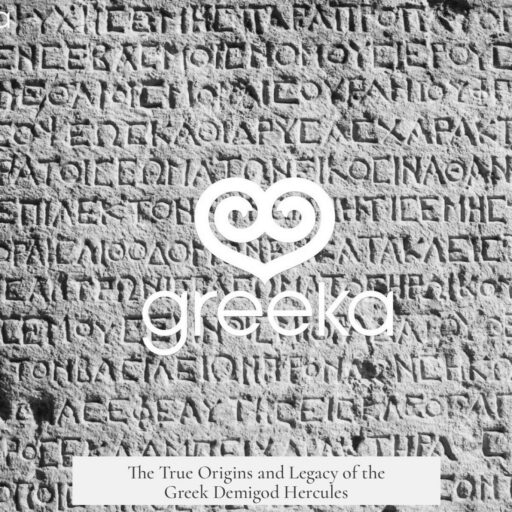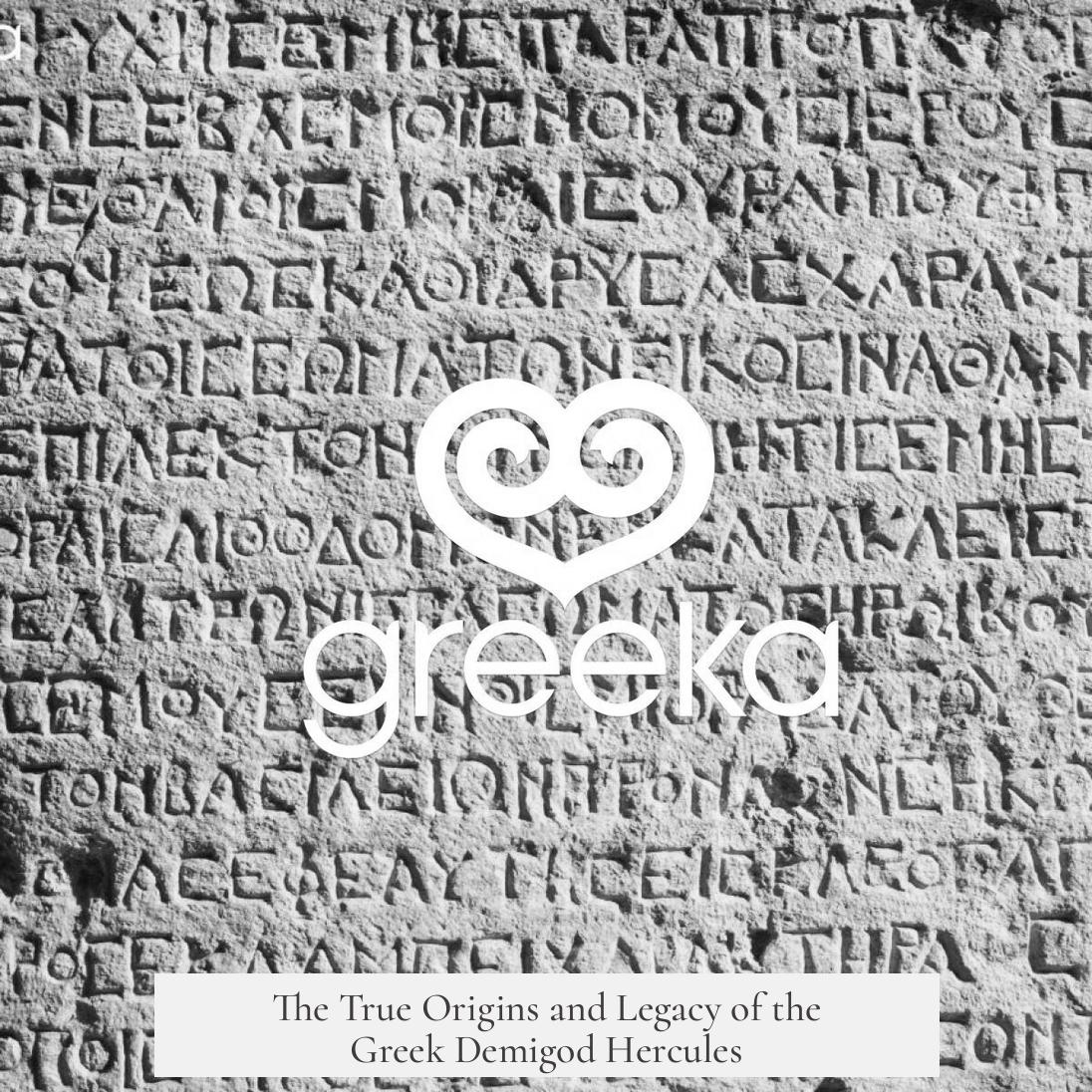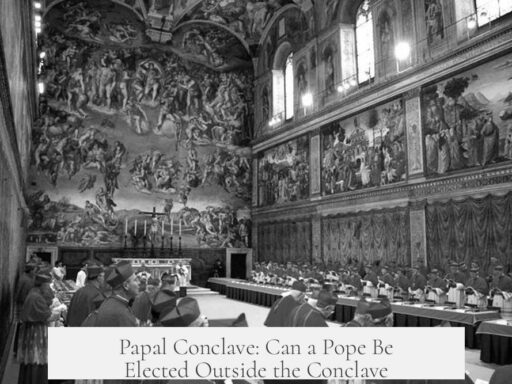The real story of the Greek demigod Hercules, known as Herakles in Greek mythology, involves a complex dual nature. Herakles exists both as a mortal hero and a divine figure within ancient Greek culture. His myths depict him as a demi-god, the son of Zeus and the mortal Alcmene, famous for his extraordinary strength and heroic deeds such as the Twelve Labors. However, alongside this heroic image, Herakles was also worshipped as a full god, with temples and honors that placed him nearly on par with the Olympian deities.
This duality was first clearly identified by the Greek historian Herodotos, who compared the Phoenician god Melqart to Herakles. Through his analysis, Herodotos observed that the divine worship of Herakles likely originated from older Near Eastern traditions, especially Phoenician religion. The god Melqart shared many attributes with the divine Herakles, suggesting that the godly aspect of Herakles was adopted or adapted from these earlier Mediterranean gods.
Herodotos pointed out that the worship of the divine Herakles, such as the temple to Melqart on the island of Thassos, predated the historical period traditionally ascribed to the heroic Herakles. He argued this meant the divine Herakles might have existed as a separate religious figure before being connected with the hero of popular myth. At the same time, Herodotos believed Herakles to be a real person living in a historical timeframe, although distinct from the divine version worshipped in temples. This indicates that the identity of Herakles evolved from a potentially historical man into a mythological hero and a god-like figure.
In the heroic context, Herakles is comparable to figures like Achilles or Hector—mortals who achieved great feats and were honored in hero cults after their deaths. This hero cult worship focused on his bravery, strength, and moral struggles. Conversely, the godly Herakles received full divine worship, with temples and rituals that elevated him above mere mortals, reflecting his adoption into the pantheon as a semi-Olympian god.
Many royal families and cities in the ancient Greek world claimed descent from Herakles, including the Spartan royal dynasties, Corinth’s Bacchiadae family, and the Macedonian Argead dynasty, which counted Alexander the Great as a descendant. While these genealogical claims do not prove Herakles’ historical existence, they demonstrate the significant cultural importance and belief in his real-life origin among ancient Greeks.
The mythical Herakles is best known for tales such as the Twelve Labors, which highlight his strength, endurance, and heroic character. These stories have no firm historical basis and serve more as cultural allegories and moral lessons within Greek mythology. Modern scholarship treats Herakles primarily as a mythological figure, similar to other legendary heroes like Robin Hood or King Arthur, whose lives are more symbolic than factual.
| Aspect | Description |
|---|---|
| Heroic Herakles | Demi-god son of Zeus and mortal Alcmene, featured in myths and honored in hero cults. |
| Divine Herakles | Worshipped as a full god, akin to Olympians, with temples and widespread reverence. |
| Phoenician Melqart | Near Eastern god linked with the divine Herakles; source of older religious worship. |
| Herodotos’ View | Divine Herakles predates heroic myths; real man likely inspired the hero figure. |
| Genealogical Claims | Ancient noble families traced lineage to Herakles, showing belief in his historicity. |
Herakles remains central to Greek cultural identity, blending myth, religion, and possible historical memory. His stories reflect ancient values of strength, endurance, and redemption while his worship shows the adaptation of earlier Mediterranean gods into Greek belief.
- Herakles combines roles as a mortal hero and a divine figure.
- His divine worship likely derives from ancient Near Eastern traditions, particularly Phoenician Melqart.
- Herodotos highlighted the distinction between the heroic and divine Herakles, suggesting two origins.
- Several royal dynasties claimed descent from Herakles, reflecting belief in his existence.
- Modern scholars regard Herakles chiefly as a mythological character without confirmed historicity.
What is the Real Story of the Greek Demigod “Hercules”?
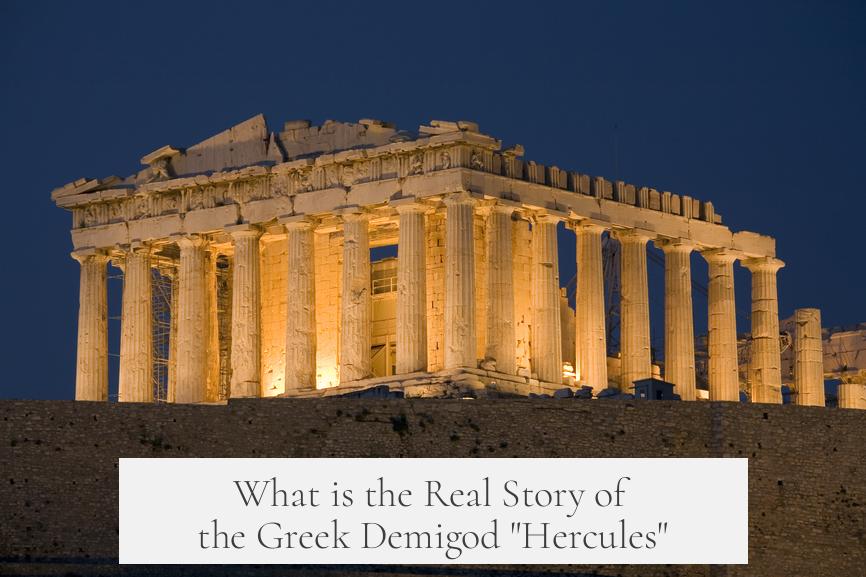
If you’re wondering who Hercules really was, the answer is fascinating and a bit tangled: Hercules, or Herakles as the Greeks called him, was both a demi-god hero and a divine figure worshipped almost like the gods—two sides of the same mythological coin.
That’s right. The story of Hercules isn’t just the classic tales of a strong man completing impossible labors. It’s a blend of hero worship, divine reverence, and cultural adaptation that stretches far beyond one explanation.
So, what’s the real story behind this legendary figure? Grab a cup of ambrosia (or coffee) and let’s dive in.
The Dual Nature of Herakles: Half Mortal, Half Divine—or Both?
Here’s where Hercules gets truly interesting—and confusing. Back in the day, the ancient historian Herodotos noticed something peculiar. He was comparing Greek religion to that of the Phoenicians, particularly their god Melqart, who shared many similarities with Herakles.
Herodotos found that Herakles was more than just a hero. In Greek culture, he had a split personality:
- One version was a demi-god hero, much like Achilles or Hector—mortals who performed great deeds and were honored after death.
- The other version was a full-fledged god, worshipped in temples, sometimes nearly equal to the Olympian gods like Zeus or Apollo.
Imagine Hercules as the ancient world’s version of a celebrity who’s also revered as a deity. Quite the status, right?
Hero Cults: Worshipping Hercules the Demi-God
Like other famous Greek warriors, Herakles was the star of many heroic myths. The Greeks celebrated him in hero cults, which were essentially local or regional religious practices focusing on mortal heroes who had passed on.
Think of these hero cults as fan clubs that worship survivors of epic adventures—Hercules’ twelve labors being the ultimate highlight reel. For example, killing the Nemean lion and cleaning the Augean stables were no small feats, and they earned him legendary status.
In this way, Herakles was mortal enough to be relatable, yet extraordinary enough to inspire generations. His cults didn’t demand full godly worship but acknowledged a hero’s place in their hearts and rituals.
Herakles as a Full God: Temples and Divine Honors
Now, the divine Herakles worship is a different beast. Beyond hero admiration, some places treated him like an Olympian. Temples were built, rituals performed, and prayers offered as to a god.
This level of godly reverence was not confined just to Greece. Mediterranean cultures including the Phoenicians embraced this divine form, arguably borrowing or influencing each other’s stories.
Herodotos himself recorded that temples dedicated to Melqart—the Phoenician parallel to Herakles—were older than Greek temples to the hero version of Hercules, hinting that the godly Herakles might have a Near Eastern origin.
Melqart and Historical Roots: A Mediterranean Connection
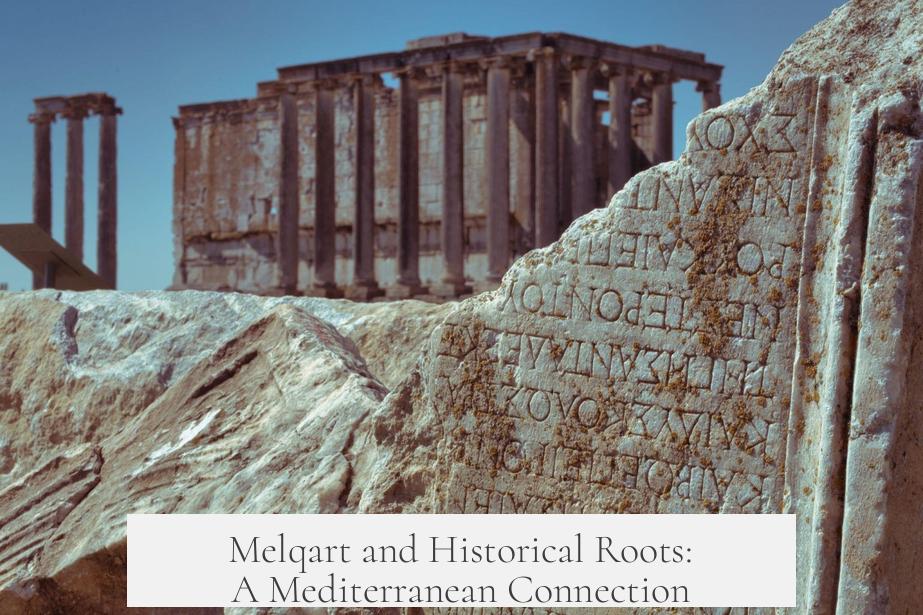
Melqart was basically the Phoenician Hercules. Herodotos pointed out that the divine worship of Herakles was likely derived from this older god’s cult. The famous temple to Melqart on Thassos was ancient and predated Greek myths about Herakles.
The Greek Herakles might have evolved from Messianic or divine attributes of Melqart, transforming over time into the demi-god hero intertwined with human stories. So, the divine Herakles probably came first, and the heroic human-like Herakles was a later development.
Did Hercules Really Exist? Royal Lineages Weigh In
Here’s where things get sticky. Several royal families proudly claimed descent from Herakles. The Spartans, the Bacchiadae family of Corinth, and the Macedonian Argeads (yes, Alexander the Great’s family!) all linked their lineage to him.
However, it’s crucial to note these claims don’t prove Hercules existed historically. Legendary ancestors are like celebrity endorsements for aristocrats—boosting prestige without strict fact-checking.
Still, the fact that so many Greeks believed he was real means Herakles had significant cultural weight. His mythos blended so well with reality that many took him as a historical figure.
The Mythological Hero of Greek Culture
As the son of Zeus and the mortal Alcmene, Herakles fits well within the trope of heroic demi-gods. His twelve labors—ranging from slaying the Hydra to capturing Cerberus—form the backbone of his enduring myth.
Yet, from today’s perspective, he’s best seen as a myth. Like Robin Hood or King Arthur, Hercules combines fact, legend, and cultural ideals into a rich narrative rather than a straightforward biography.
This mythology serves multiple purposes: teaching courage, demonstrating justice and strength, and reflecting the values and fears of ancient societies.
Final Thoughts: Why Does Understanding Hercules Matter?
So why dissect Hercules’ story beyond the hammer-and-lion-skin image? Because understanding the dual nature of Herakles shines light on how ancient cultures borrowed, evolved, and mythologized figures to meet spiritual and social needs.
Plus, it reveals the human tendency to blend history and myth—to create heroes that are both relatable and divine. It’s like ancient branding with a dash of theology and storytelling genius.
Next time you hear about Hercules’ twelve labors, remember: you’re celebrating both a legendary hero and a god with roots reaching far beyond Greece. Whether real or not, his story still flexes cultural muscles today.
“Herakles embodies a fascinating mix: a mortal hero who could inspire and a divine god who could command worship. That’s the real Hercules story.”
